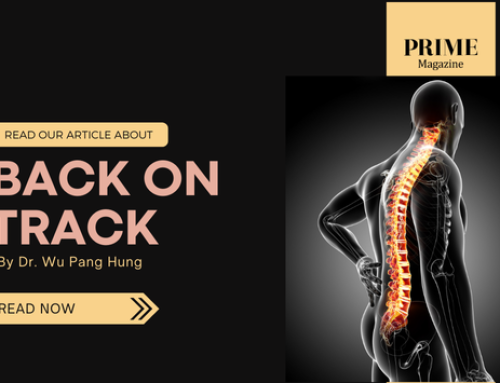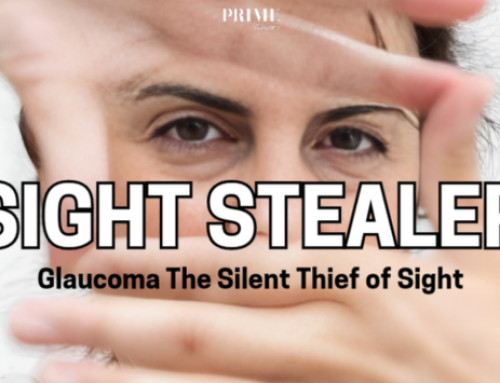Learning More About Dry Eye Disease
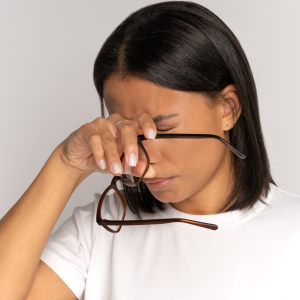
Imagine there is an ongoing battle behind your eyelids every day where there is a constant struggle to find relief. That is the reality for millions of people worldwide who face the challenge of dry eyes. Far from a minor inconvenience, this condition can have a profound impact on daily life, affecting productivity, quality of vision and overall wellbeing. For this article, we will take a closer look at dry eye disease, and the things we can do to prevent and treat this condition.
DRY EYE DISEASE: PREVALENCE AND SYMPTOMS
Tears are constantly being produced by our tear glands. The tears form a protective layer around the outer layer of the eye and keep the surface of the eye well moisturised. Dry eye occurs when the tears are unable to provide adequate lubrication for our eyes. In epidemiological studies, the prevalence of dry eye disease has been found to range from 5% to 50%. A study performed in Singapore in 2015 found that the prevalence of symptomatic dry eye disease was 12.3% with a greater prevalence in females than males.
Due to the lack of adequate lubrication of the surface of the eye, one may experience the following symptoms from dry eye disease:
- Gritty or foreign body sensation in the eyes
- Redness in the eyes
- Intermittent blurring of vision
- Increased sensitivity to light
- Increased tearing and discharge
- Eyes feel tired easily, especially after prolonged periods of reading or screen usage
Yet, for some people, they actually experience increased tearing when they suffer from dry eye disease. Why is this so? Dry eyes can be the result of inadequate production of tears or increased evaporation of tears. To better understand this, let us first take a closer look at the composition of our tear film.
Our tear film comprises of three layers: the lipid layer, the aqueous layer and the mucin layer.
- Lipid Layer – The lipid layer is produced by tiny oil glands along our eyelid margins known as meibomian glands. It is the outermost layer of the tear film and delays the evaporation of tears from the eyes.
- Aqueous Layer – The aqueous layer is produced by the tear glands (lacrimal glands). It forms the bulk of the tear layer and apart from a high-water content, it consists of nutrients essential for maintaining the health of the surface of the eye as well as flushing away toxins and debris.
- Mucin Layer – The mucin layer is the innermost layer of the tear film and is produced by cells called goblet cells located in the lining of the eyeball (conjunctiva). The mucin layer helps to anchor the aqueous layer to the surface of the eye, and increases the stability of the tear film.
In conditions such as meibomian gland dysfunction, there is an inadequate lipid layer resulting in an increased rate of evaporation of tears. In response, the lacrimal glands will produce more tears to compensate, resulting in increased tearing despite the person having dry eye disease.
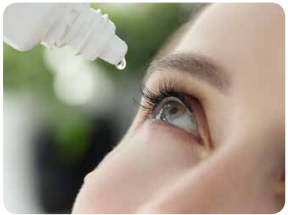
So, if dry eye disease is very common and completely harmless, should we not just ignore it and let it resolve by itself? Well, the answer is absolutely not! On the surface, dry eye disease may seem to be easily treated with lubricant eye drops. However, the underlying cause of the disease needs to be identified and addressed appropriately. This can be done via a comprehensive eye examination by an ophthalmologist.
CAUSES
Dry eye disease can affect one’s quality of life significantly and in some cases, it may even be disabling. This is apart from the fact that it may be a precursor to more serious conditions, such as recurrent corneal erosions, corneal ulcers, eye infections and even loss of vision. The causes of dry eyes can be classified into a few broad categories. They include:
- Inadequate production of tears (Aqueous-deficient dry eyes)
- Increased evaporation of tears (Evaporative dry eyes)
- Mixture of both (Mixed dry eyes)
- Let us now take a closer look at the causes.
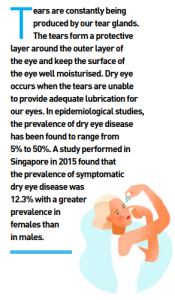
- Aqueous-Deficient Dry Eyes
This occurs when the lacrimal glands are unable to produce adequate tears for the aqueous layer. This can be due to several reasons, including:
- Tear production reduces as we age.
- Autoimmune conditions, such as Sjogren’s syndrome, that cause inflammation in the lacrimal gland, resulting in decreased tear production.
- Situations that result in a desensitisation of the cornea, such as LASIK surgery, contact lens wear, etc. In such cases, there is a decreased ability to trigger an increased production of tears by the lacrimal gland in the event of eye dryness.
- Hormonal changes, such as menopause, which result in a reduction in tear production.
- Certain medications, such as antihistamines, nasal decongestants, some antihypertensive medications as well as antidepressants.
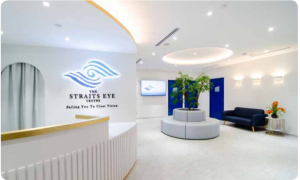
- Evaporative Dry Eye
This occurs when there is in an increased rate of tear evaporation and can be the result of:
- Meibomian gland dysfunction where there is a blockage or inflammation of the meibomian glands, resulting in decreased lipid production and increased rate of tear evaporation.
- Prolonged periods of reading or screen usage, which are usually associated with decreased blinking, hence allowing faster evaporation and drying of the eye surface. This is also known as digital eye strain.
- Eyelid conditions such as Bell’s palsy where there is an impairment in eyelid closure as well as decreased blinking.
- Environmental factors, such as air-conditioning or fan blowing directly in one’s face, which increase the rate of tear evaporation.
PREVENTION
There are things we can do to prevent dry eyes. They include:
- Make Modifications to the Environment
Measures, such as re-directing the air-conditioner or fan away from oneself or avoiding windy areas, can help to reduce the occurrence of dry eyes.
- Adopt Good Eye Habits
When using the computer or reading for long hours, make sure that you have good lighting. Also, do remember to take regular breaks in between. You can consider applying the 20-20-20 rule. After every 20 minutes spent looking at the screen, try looking at an object at least 20 feet away for 20 seconds.
- Nutritional Supplements
Omega-3 supplements have been shown to reduce inflammation in the eyelids and improve the function of the meibomian glands, which are important for the formation of the lipid layer of the tear film.
TREATMENT OPTIONS
There are several treatment options you can take for your dry eyes, they include:
- Artificial Tears, Gels and Ointments
Artificial tears can be used to lubricate the eye throughout the day. Gels and ointments are thicker than artificial tears and can therefore remain on the eye longer. However, they can cause blurring of vision for several minutes after applying and are therefore recommended for use just before sleeping.
With so many types of over-the-counter eye drops for dry eyes available, it can be confusing to know which is the most suitable type for you to use. Broadly speaking, lubricant eye drops can be classified into three groups, namely:
- Eye Drops with Preservatives
These eye drops are the most commonly available and 2 the most affordable. Due to the added preservatives, the eye drops can only be kept for 30 days after they are opened. However, as the preservatives may potentially cause eye irritation, they can be only used for a frequency of up to four times a day. These eye drops are most suitable for individuals with mild dry eyes who require eye drops occasionally.
- Preservative-Free Eye Drops
Preservative-free eye drops usually come in strips of single dose containers which only last for a single day and need to be disposed of within the same day. Alternatively, they may come in bottles with specially designed one-way valves that allow the eye drops to last for up to six months. Due to the non-preservative nature of the drops, these drops can be used as frequently as every hour and is suitable for any severity of dry eyes.
- Lubricant Eye Gels
Lubricant eye gels are higher viscosity eye drops that are thicker and designed to last longer in the eye. They are suitable if you have severe dry eyes, especially if they are more pronounced at night. Due to the thickness of the gel, they may cause some blurring of vision or a stickiness sensation when initially applied. Hence, they are more commonly used at night just before sleep.
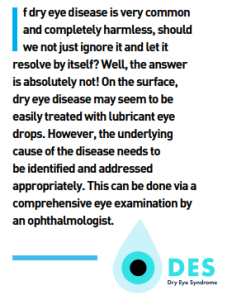
- Warm Compress and Lid Hygiene
Warm compress can be performed by placing a warm towel over your eyes and gently massaging for about two to four minutes. The heat liquifies the clogged oil glands and the massage helps to express the liquified oil from the glands. The expressed oil can then be cleaned off using an eyelid cleansing solution. By doing so, the lipid secretion from the meibomian glands can be maximised, allowing for a better coating of the tear film by the lipid layer.
- Prescription Eye Drops
Cyclosporine eye drops work by reducing inflammation in the eye and improving the ability of the eyes to produce tears. Steroid eye drops work in a similar manner, but they cannot be used long-term due to side effects such as glaucoma and cataract.
- Punctal Plugs
Punctal plugs are tiny devices that are placed in the tear duct opening (punctum) to prevent tears from draining from the eye too quickly, allowing the eye surface to remain moist for a longer time.
Dr Jason Lee Kian Seng
Dr Jason Lee is Senior Consultant and Medical Director at The Straits Eye Centre based in Camden Medical Centre. Dr Lee’s proficiency in the management of General Ophthalmology conditions, such as myopia and refractive error, cataracts and diabetic retinopathy, is complemented by an added focus in the field of Oculoplastics. After completing his residency training at Tan Tock Seng Hospital, he went on to pursue fellowships at the National Taiwan University Hospital, Taiwan and the Wenzhou Medical University Eye Hospital, China to further hone his surgical skills in the management of conditions pertaining to the eyelids, orbit and tear system. Prior to setting up The Straits Eye Centre, Dr Lee was Senior Consultant at Khoo Teck Puat Hospital as well as Visiting Consultant at Tan Tock Seng Hospital.









